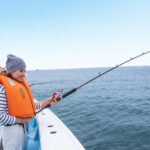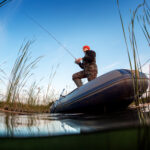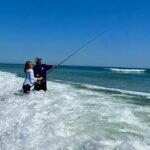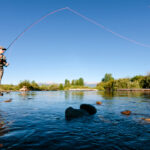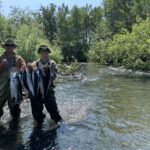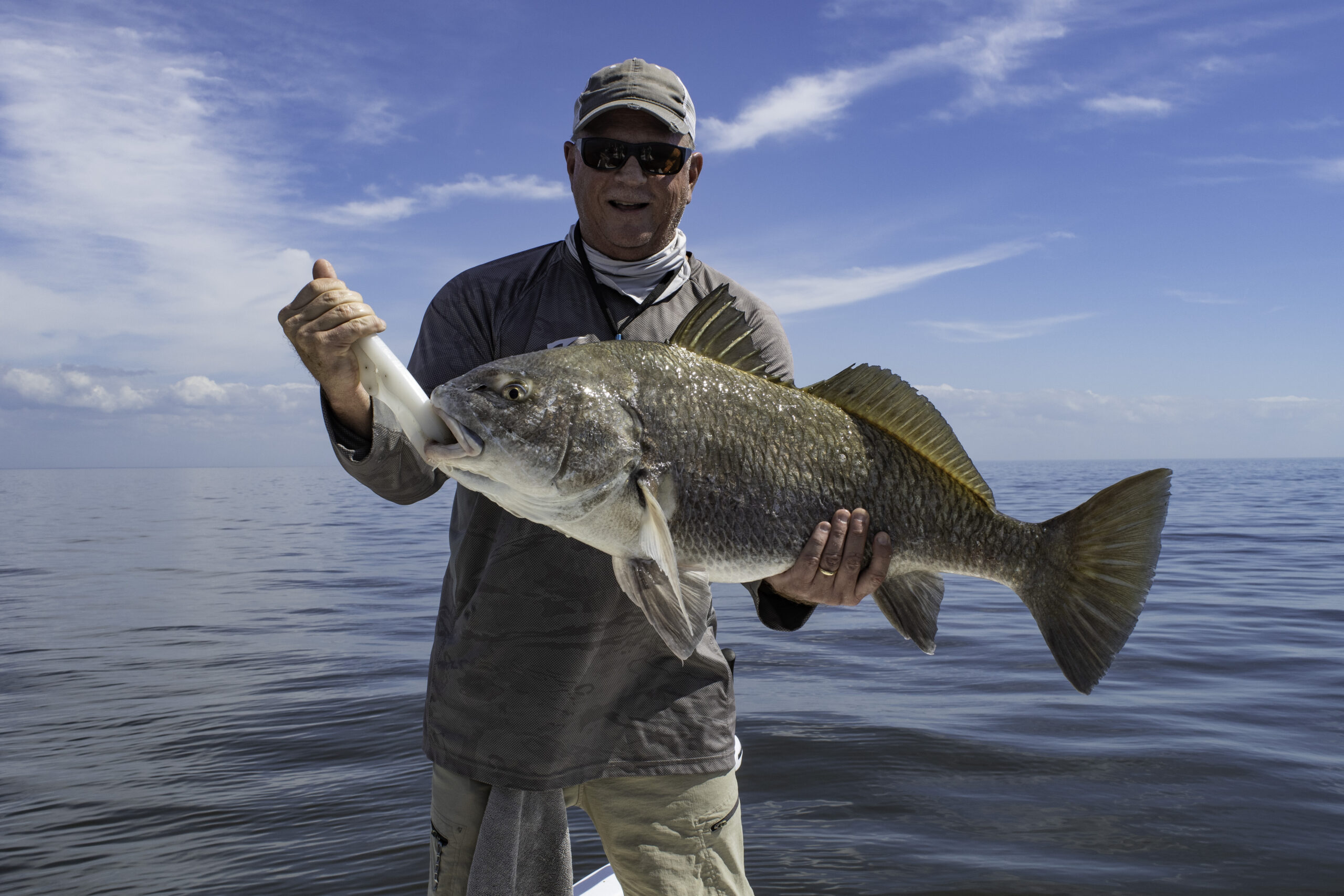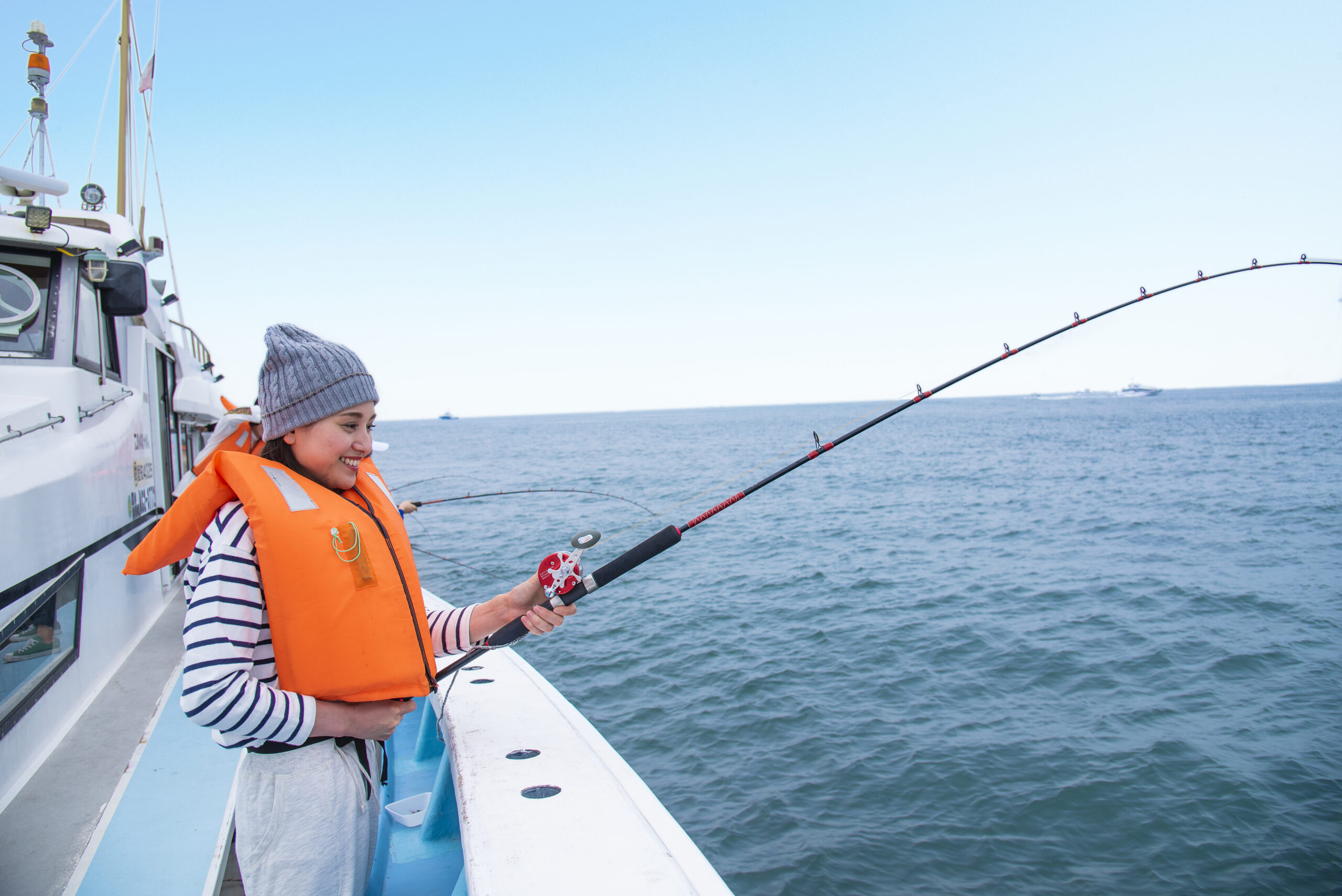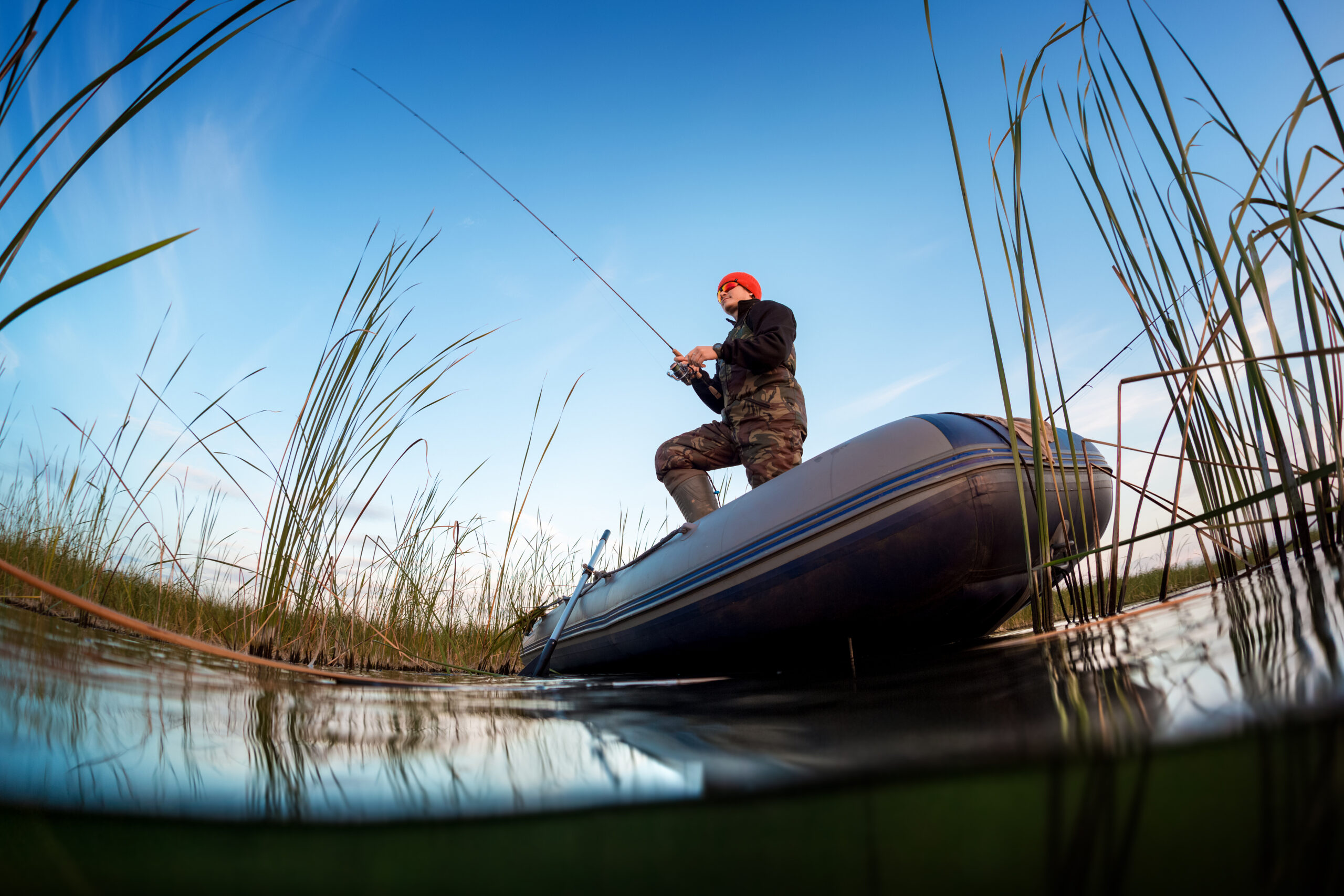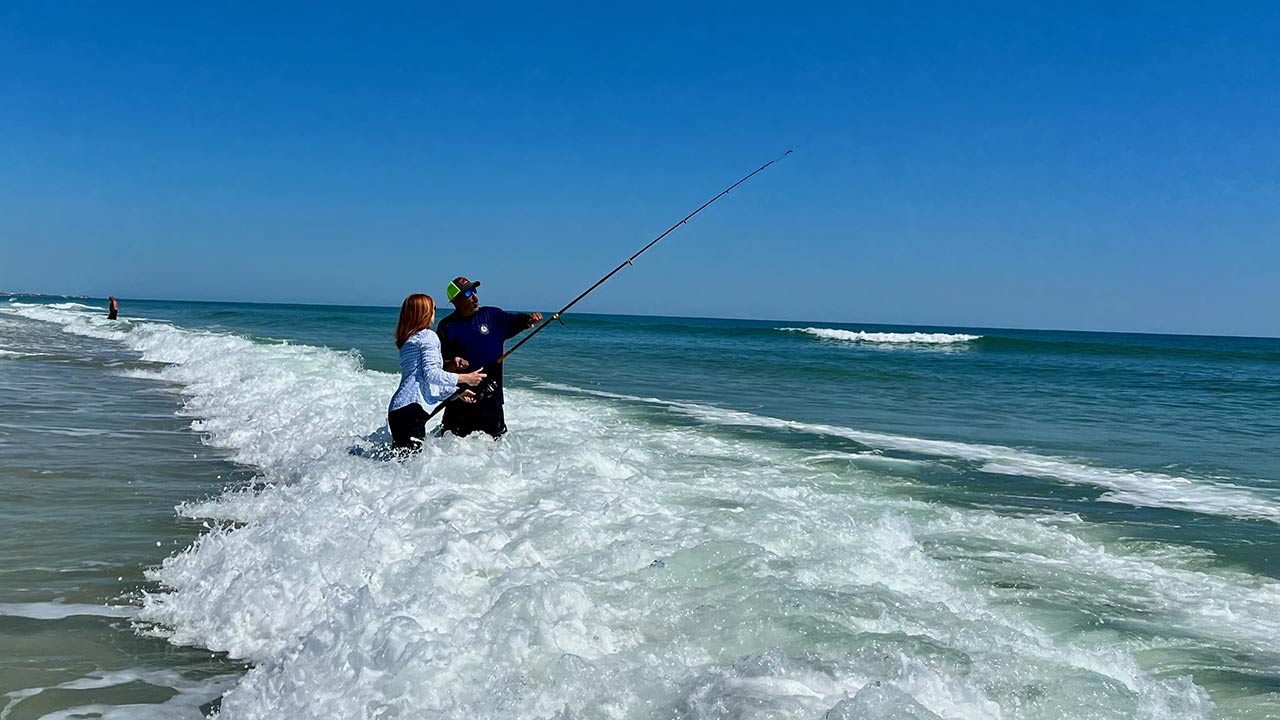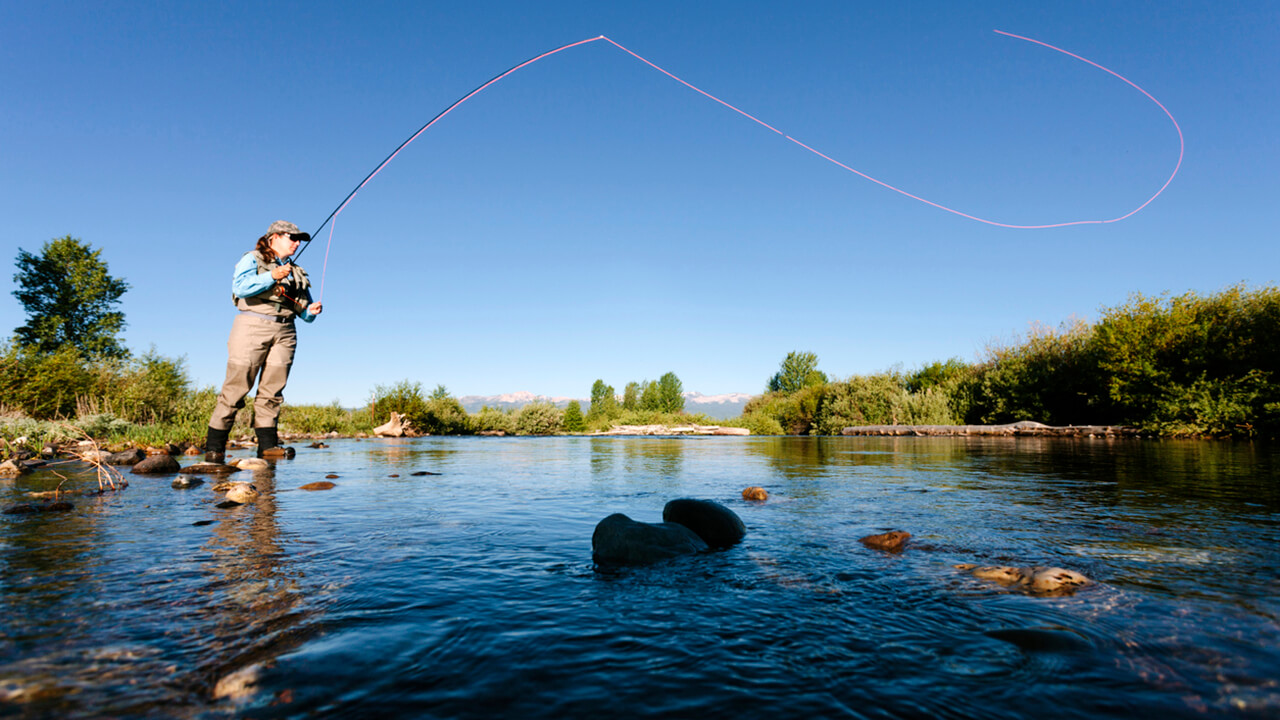Spring brings new life to the water, making it one of the most exciting times of the year for fishing. However, the success of your spring fishing trip can depend heavily on water clarity. Murky and clear water present different challenges, requiring distinct techniques and adjustments in bait selection, presentation, and overall strategy. Understanding how fish behave in different water conditions will give you an edge and help you maximize your catch rate. In this guide, we’ll cover the best spring fishing techniques for both murky and clear water, so you’ll be prepared no matter where you cast your line.
Understanding Spring Water Conditions
Spring water clarity is influenced by several factors, including snowmelt, rainfall, runoff, and increased plant and algae growth. As water temperatures rise, fish become more active and begin feeding aggressively, but the visibility of the water will determine how they respond to bait and lures.
🌫️ Murky Water Conditions:
- Caused by runoff, algae blooms, and stirring of sediment due to increased water movement.
- Fish rely more on their lateral line (which detects vibrations) and scent rather than sight.
- Visibility may be limited to just a few inches.
🌊 Clear Water Conditions:
- Often found in spring-fed lakes, calm rivers, and reservoirs with minimal runoff.
- Fish are more cautious due to increased visibility.
- Light penetration allows fish to spot bait from a distance.
Techniques for Fishing in Murky Water
Murky water requires an approach focused on helping fish detect your bait through sound, vibration, and scent rather than sight. In low-visibility conditions, making your presentation stand out is key.
🎣 1. Use Vibrating and Rattling Lures
Fish in murky water rely on their lateral line to detect movement and vibrations. Lures that create noise and movement will help fish locate your bait.
✅ Best Lures:
- Spinnerbaits
- Chatterbaits
- Crankbaits with rattles
Technique:
- Use a steady retrieve with periodic twitches to create vibration and noise.
- Target structure near the shore, including logs, submerged brush, and weed beds.
- Dark-colored lures (black, blue, or chartreuse) create a strong silhouette in murky water.
🎣 2. Go Big and Bold
In low visibility, larger baits with exaggerated movement and color patterns increase the chances of being noticed.
✅ Best Baits:
- Large soft plastics (worms, creature baits)
- Oversized swimbaits
- Buzzbaits
Technique:
- Use a slow retrieve to give fish time to lock onto the bait.
- Fish around muddy shorelines, inlets, and river mouths where fish gather.
- Pair soft plastics with scent attractants to increase strike potential.
🎣 3. Fish Shallow and Close to Cover
In murky water, fish often seek the security of shallow areas with cover to ambush prey.
✅ Best Spots:
- Fallen trees
- Rock piles
- Overhanging brush
Technique:
- Cast parallel to the shore and retrieve close to the structure.
- Use a short, twitching motion to mimic injured prey.
- Slow down your retrieve to give fish time to react.
🎣 4. Add Scent and Soft Plastics
Since visibility is limited, scent becomes a major factor in attracting fish.
✅ Best Attractants:
- Garlic-based attractants
- Shrimp or crawfish scent
- Natural oils
Technique:
- Apply scent to soft plastics and hard baits.
- Let the bait sit longer to give fish time to hone in on the scent.
- Use scented worms or creature baits near bottom structure.
Techniques for Fishing in Clear Water
Clear water requires a more natural and stealthy approach. Fish in clear water can see your bait and line more easily, so presentation and color choice are critical.
🎣 1. Use Natural Colors and Subtle Patterns
In clear water, fish are more likely to respond to baits that closely resemble their natural prey.
✅ Best Colors:
- Green pumpkin
- Watermelon
- Shad or silver patterns
Technique:
- Use light fluorocarbon line to minimize visibility.
- Work baits slowly and naturally—avoid jerky or unnatural movements.
- Opt for soft plastics and finesse baits for a subtle presentation.
🎣 2. Go Finesse with Lightweight Tackle
In clear water, fish are more wary of heavy line and aggressive baits. Finesse techniques give a more realistic presentation.
✅ Best Setups:
- Drop shot rigs
- Wacky rigs
- Ned rigs
Technique:
- Cast beyond the fish and work the bait back slowly.
- Use light twitches and pauses to imitate a struggling baitfish.
- Keep your bait in the strike zone as long as possible.
🎣 3. Fish Early Morning and Late Afternoon
In clear water, direct sunlight can make fish more cautious. Fishing during low-light conditions reduces visibility and makes fish less wary.
✅ Best Times:
- Dawn and dusk
- Overcast days
- Slightly windy conditions
Technique:
- Focus on areas with shade or cover.
- Use topwater baits like poppers or walking baits during low-light periods.
- Keep your silhouette low and avoid casting shadows on the water.
🎣 4. Target Transition Zones
In clear water, fish often stage along areas where the bottom transitions from sand to rock or where vegetation meets open water.
✅ Best Spots:
- Drop-offs
- Rocky points
- Weed lines
Technique:
- Use swimbaits or jerkbaits along these edges.
- Let your bait suspend or sink naturally in the strike zone.
- Use light, natural-colored baits with subtle action.
Best Gear for Spring Fishing in Murky and Clear Water
Selecting the right gear helps fine-tune your approach and adapt to changing water clarity.
🛠️ Rod and Reel:
- Murky Water: Medium-heavy rod with fast action for strong hook sets.
- Clear Water: Medium-light to medium rod with moderate action for finesse techniques.
🛠️ Line:
- Murky Water: 12–20 lb monofilament or braided line for strength and visibility.
- Clear Water: 6–12 lb fluorocarbon for reduced visibility.
🛠️ Hooks and Terminal Tackle:
- Murky Water: Use larger hooks for better visibility and strong hook sets.
- Clear Water: Use smaller, thinner hooks to keep presentations natural.
Final Tips for Spring Fishing Success
✔️ Monitor the Weather: Spring weather changes rapidly—fish tend to be more active during stable conditions.
✔️ Adapt Your Approach: If the water clarity changes after rain or snowmelt, switch between murky and clear water tactics.
✔️ Keep It Simple: Don’t overcomplicate your bait selection. If one color or bait type isn’t working, switch it up until you find what works.
✔️ Stay Stealthy: In both murky and clear water, avoid making loud splashes or heavy movements on the bank.
✔️ Be Patient: Fish are adjusting to seasonal changes too—sometimes it takes a little extra time to get a bite.
Conclusion
Spring fishing is all about understanding how fish respond to changing water conditions. In murky water, focus on vibration, scent, and bold presentations to help fish locate your bait. In clear water, rely on natural colors, finesse techniques, and subtle movements to entice wary fish. With the right approach, gear, and timing, you’ll be ready to make the most of your spring fishing adventures—whether you’re working the shoreline of a muddy pond or the crystal-clear depths of a mountain lake.

